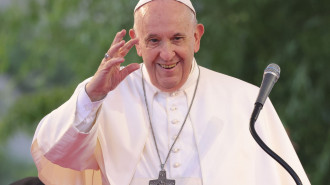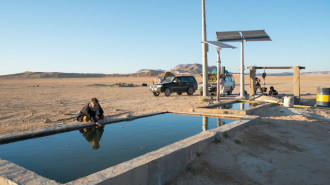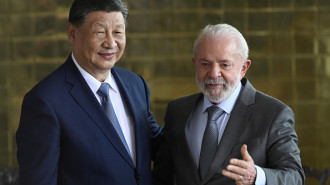35% of Gazans can now drink freshwater at home: official
The Gaza-based Palestinian Water Authority said on Tuesday that 35% of the local population are now able to drink fresh water from the tap at home after a series of projects to tackle the brewing water crisis in the besieged coastal enclave were implemented.
Marwan al-Bardawil, director-general of the Project Coordination Unit at the Water Authority, told The New Arab that "while this percentage is smaller on average compared to other populations' access to water, it is still an improvement than what we had in previous years."
How Gaza's water crisis is creating a humanitarian disaster ⬇ https://t.co/Va5TMUj56T
— The New Arab (@The_NewArab) December 6, 2021
For years, human rights organizations have warned about the deteriorating situation regarding drinking water in the Gaza Strip.
At the 48th session of the UN Human Rights Council this past October, the Global Institute for Water, Environment and Health and the Euro-Mediterranean Human Rights Monitor declared that water in Gaza is "undrinkable" and "slowly poisoning" people.
Gaza's ruling government, Hamas, accuses Israel of being responsible for the exacerbating water crisis after it imposed a suffocating blockade on Gaza in 2007.
According to the World Health Organization (WHO), both salinity and nitrate levels in Gaza's groundwater are"well above" the guidelines for safe drinking water.
About 50 per cent of Gaza's children suffer from water-related infections, the WHO said.
In an effort to provide safe drinking water to Gazans, local authorities and private organizations have established desalination plants across the besieged enclave. Plans were drawn up in 2012 by the Water Authority and approximately $US 720 million have been invested in developing the water sector since 2015.
"We have established three desalination plants; one in the city of Deir al-Balah in the central Gaza Strip, one in the city of Khan Yunis and the last one in the northern Gaza Strip, in order to provide fresh water to all areas of the Strip," al-Bardawil said.
He explained that 12 underground reservoirs were established to receive this water, whether the receiving water was from an Israeli company or through desalination that was then mixed with usable wells, before being distributed to the population in Gaza.
"In 2015, about 97% of the water that was pumped into the distribution networks for citizens was salty water, unfit for drinking. Only 5% of the population drank potable water, while 95% depended on buying water," he said.
However, the newly implemented projects now ensure that approximately 35% of the Gaza population are now able to drink water from the tap in their homes in areas such as East Khan Younis, Al-Bureij, Al-Nuseirat and Al-Mughazi in the middle of the Gaza Strip, and neighbourhoods across the centre and southwest of Gaza City.
The director-general al-Bardawil stressed that work is still underway to re-develop the distribution networks in all of the Gaza Strip, and will commence after Ramadan.





 Follow the Middle East's top stories in English at The New Arab on Google News
Follow the Middle East's top stories in English at The New Arab on Google News


